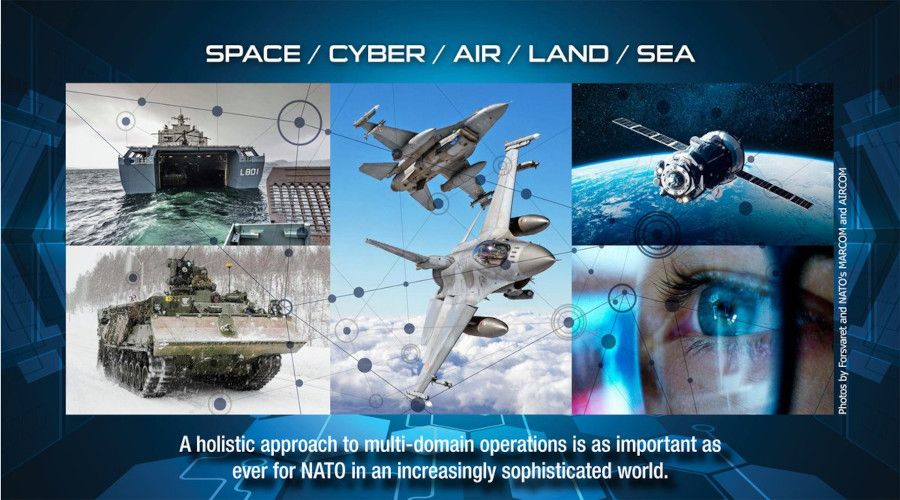
Multi-Domain Operations represents a pivotal shift in NATO’s approach. This transformative concept empowers the Alliance to strategically influence events, synchronize efforts with external stakeholders, and present formidable challenges to adversaries. For those interested in learning more about this paradigm shift, this article explores the nuances of Multi-Domain Operations, distinguishing it from traditional “Joint Operations” and highlighting its ultimate aim of safeguarding the freedom and security of NATO’s extensive population.
Multi-Domain Operations: Overview
At its core, Multi-Domain Operations refers to the push for NATO to orchestrate military activities across all operating domains and environments. These actions are synchronized with non-military activities and enable the Alliance to create desired outcomes at the right time and place. This will enable NATO’s Military Instrument of Power to prepare, plan, orchestrate and execute coordinated activities in collaboration with other stakeholders and actors associated with the Alliance. In doing so, this concept will deliver tailored options that build an advantage in shaping, contesting and fighting and presents dilemmas that decisively influence the attitudes and behaviours of adversaries.
What is a Domain?
When discussing Multi-Domain Operations, defining the second term in the title is an important first step. Within NATO’s structure there are five areas of operations: Maritime, Land, Air, Space and Cyberspace. Historically, operations in these domains have either not existed (i.e. Space and Cyber) or have functioned as largely independent entities within national militaries. Many Allied nations’ militaries still function in this capacity today; however, given the speed of information, data flows and adversarial capabilities, the necessity of orchestrating military activities across all domains as a single force is crucial for long-term defence and deterrence initiatives within NATO.
Who is Responsible for Developing Multi-Domain Operational Capabilities?
The responsibility for developing Multi-Domain capabilities falls on every aspect of NATO. Allied nations’ domain-focused military forces have a crucial role to play; yet equally important is the synchronization of military capabilities with nationally integrated Instruments of Power and external stakeholders. By leveraging these three distinct, yet interconnected groups, NATO can employ the full capabilities of the Alliance to respond to a multitude of threats.
Nationally Integrated Instruments of Power
The term National-level Instruments of Power refers to the numerous Departments, Agencies, and/or Ministries that are responsible for specific sectors within Allied nations’ governments. For example, recent responses from NATO member states to malignant actors have centred on economic sanctions, information campaigns and diplomatic activity. These activities are largely conducted by national-level organizations, such as a Foreign Ministry or nationally sponsored financial institutions, and are prime examples of the role Nationally Integrated Instruments of Power play in Multi-Domain Operations. By synchronizing the capabilities of the current 32 member nations’ Nationally Integrated Instruments of Power with the Alliance’s existing military capabilities, the NATO can ensure both military and governmental policies are aligned toward a common goal.
External Stakeholders
External stakeholders fall outside the Alliance or Allied nations’ direct government or military command structures. However, external stakeholders maintain significant abilities in innovation, technological advancement and transformation of military capabilities. These groups include academia, private industry, and other international partners, many of whom have long-standing business relationships with NATO and its Instrument of Military Power. While these partnerships in the past have provided the Alliance with much of its hardware and technology, the role of external stakeholders within the vision of Multi-Domain Operations imagines collaboration that goes deeper than client-customer interactions and instead fosters full integration across domains and capabilities.
Imagine NATO forces identify a Time-Sensitive Target that poses a direct threat to NATO personnel and/or Alliance citizens. The commander of the NATO forces requires a positive identification in order to act and defend personnel and NATO interests. Through interconnectivity with a commercial supplier of Space Intelligence, Surveillance, and Reconnaissance, the NATO decision-makers can access near real-time data and information that allows intelligence to confirm positive identification and track the target. The target is then engaged and the commercial supplier remains connected to support any further activity. This interconnectivity allows NATO the agility to take advantage of opportunities quickly and have credible, actionable information.
What is the Difference between “Joint Operations” and “Multi-Domain Operations”?
Many military forces within the NATO ecosystem have “Joint” military capabilities. In the post-World War II restructuring of military forces, the emergence of integrated command structures that cut through inter-service rivalries was common throughout the militaries of NATO members. These “Joint” capabilities are associated with a collective focus and cooperation between traditional military services (think of United States Joint Chiefs of Staff or the United Kingdom’s Permanent Joint Headquarters). However, “Joint” command structures promote coordination with other armed services, while a “Multi-Domain” mindset must go beyond that to include military and non-military assets, which is the key differentiating factor between “Joint” and “Multi-Domain” Operations.
What is the End Result for Multi-Domain Operational Development?
NATO’s large-scale goal for the development of Multi-Domain Operational capabilities is to synchronize the collaboration of various stakeholders throughout the Alliance and deliver a streamlined defence and deterrence system to its one billion citizens. In doing so, NATO will be better equipped to continue its mission of providing the North Atlantic and European regions with defence and deterrence capabilities which guarantee our freedom and security.
Introduction to NATO`s Multi-Domain Operations on-line course
